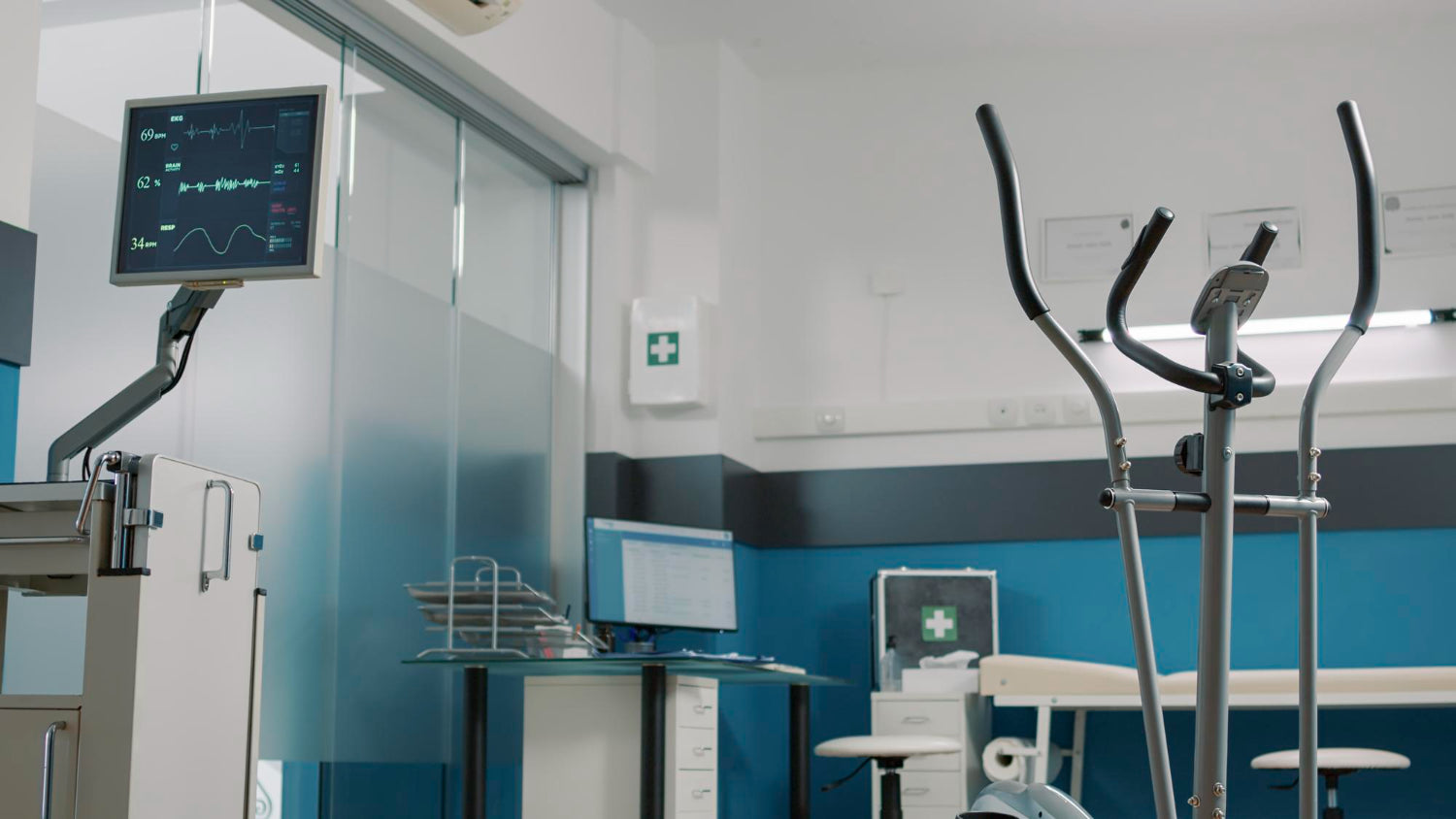

· By Trevor Horne
Preventing Work-Related Musculoskeletal Disorders with Saddle Stools: A Quick Guide
Work-related musculoskeletal disorders (WMSDs) are a significant concern for dentists, veterinarians, surgeons, and other medical professionals. These health issues arise from prolonged static postures, repetitive motions, and improper ergonomic practices in the workplace, leading to pain, discomfort, and reduced productivity. As healthcare professionals, recognizing the importance of effective ergonomics and implementing strategies to prevent WMSDs is essential for ensuring your long-term well-being and the quality of care you provide to patients.
Saddle stools have become an increasingly popular ergonomic seating solution within healthcare settings, providing numerous benefits such as improved posture, reduced pressure on the lower back, and enhanced comfort during extended periods of sitting. With a diverse range of saddle stools offered by ProNorth Medical Corporation, one of the top medical device and equipment suppliers in Canada and the US, adopting a saddle stool tailored to your specific needs can significantly contribute to the prevention of WMSDs.
In this educational, informative, and helpful blog post, we will delve into the vital role saddle stools play in combating work-related musculoskeletal disorders and explore the benefits they can provide to dentists, veterinarians, surgeons, and other healthcare professionals. By understanding the connection between ergonomics and the prevention of WMSDs, you can make informed decisions regarding your seating choices and improve your overall health and work experience.
Join us as we explore the world of saddle stools and their potential in preventing work-related musculoskeletal disorders, ultimately leading to a happier, healthier, and more productive work environment for healthcare professionals.
Identifying the Causes of WMSDs
Understanding the factors contributing to work-related musculoskeletal disorders is essential for healthcare professionals seeking to prevent these issues. For dentists, veterinarians, surgeons, and other practitioners, the primary risk factors associated with WMSDs include:
- Prolonged static postures: Remaining seated in one position for extended periods can strain muscles, reduce blood flow, and contribute to discomfort in various body regions.
- Repetitive motions: Performing the same tasks repetitively can lead to muscle strain and imbalances, increasing the risk of WMSDs.
- Awkward postures: Bending, twisting, and leaning in awkward positions during procedures can place additional stress on the musculoskeletal system.
- Insufficient ergonomics: Improper seating and workstations can lead to poor body mechanics and force practitioners into unhealthy postures, exacerbating WMSD risk.
The Ergonomic Advantages of Saddle Stools
Saddle stools offer several ergonomic benefits that can help mitigate the risk factors associated with WMSDs in healthcare professions. The key features and advantages of these specialized seating solutions include:
- Improved posture: Saddle stools encourage an upright sitting position, promoting a natural S-shaped spinal curvature and reducing pressure on the lumbar region of the spine.
- Open hip angle: The design of the saddle stool facilitates an open hip angle (approximately 135 degrees), reducing the risk of back and hip pain by minimizing disk compression.
- Enhanced circulation: The open hip angle and upright posture facilitated by saddle stools can improve blood circulation in the lower extremities, reducing the risk of swelling and discomfort.
- Increased core strength: The active sitting posture promoted by a saddle stool engages the core muscles, leading to better body mechanics and reducing strain on the lower back.
- Ease of movement: Saddle stools allow for more significant freedom of movement, enabling practitioners to smoothly transition between positions and minimizing excessive strain and twisting.
Selecting the Right Saddle Stool
To maximize the ergonomic advantages of saddle stools, healthcare professionals should choose a stool that meets their unique needs, preferences, and specialty requirements. Consider the following tips when selecting the right saddle stool for your practice:
- Assess your specific seating needs: Determine your ergonomic requirements based on your profession, the procedures you perform, and any pre-existing WMSDs or areas of discomfort.
- Investigate seat shapes and cushioning: Explore various seat shapes (traditional, split, or contoured) and cushioning options in relation to your working environment and preferences.
- Consider upholstery materials: Choose an upholstery material that balances comfort, durability, and ease of cleaning, while adhering to hygienic standards in your practice.
- Ensure adequate adjustability: Prioritize saddle stools with adjustable seat height, tilt, and optional backrests or armrests to cater to your unique ergonomic preferences.
Maintaining Proper Posture and Body Mechanics
While a saddle stool offers numerous ergonomic benefits, proper posture and body mechanics additionally play a crucial role in preventing WMSDs. Here are some strategies to incorporate alongside your saddle stool usage:
- Be mindful of your posture: Regularly check your posture while sitting on the saddle stool, ensuring your spine maintains its natural curvature and your hips are flexed at an open angle.
- Engage your core: Remember to engage your core muscles while sitting to provide additional support to your spine and reduce strain on your back.
- Take breaks and stretch: Schedule regular breaks to stand, walk, and stretch your muscles, encouraging blood circulation and relieving any tension or stiffness.
- Create a supportive work environment: Design your workspace to facilitate proper ergonomics, positioning equipment and surfaces at appropriate heights and distances for comfortable usage.
Conclusion
Incorporating a saddle stool into your healthcare practice, alongside maintaining proper posture and body mechanics, can significantly reduce the risk of work-related musculoskeletal disorders. This investment in comfort and ergonomics will not only enhance your personal well-being but also ensure the long-term health of your staff and the quality of care provided to your patients.
ProNorth Medical is committed to offering a diverse range of ergonomic saddle stools designed specifically for dentists, surgeons, veterinarians, and other medical professionals. Browse our online store to find the ideal saddle stool for your practice, and feel free to contact our knowledgeable team for assistance in making the right choice.
